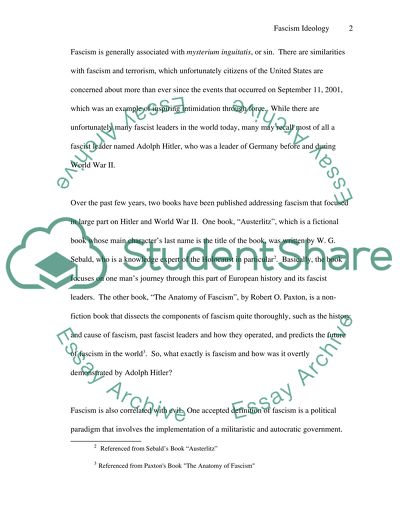Cite this document
(“Comparison of Literature Respecting Fascism during the Nazi Party Era Essay”, n.d.)
Comparison of Literature Respecting Fascism during the Nazi Party Era Essay. Retrieved from https://studentshare.org/miscellaneous/1499465-comparison-of-literature-respecting-fascism-during-the-nazi-party-era
Comparison of Literature Respecting Fascism during the Nazi Party Era Essay. Retrieved from https://studentshare.org/miscellaneous/1499465-comparison-of-literature-respecting-fascism-during-the-nazi-party-era
(Comparison of Literature Respecting Fascism During the Nazi Party Era Essay)
Comparison of Literature Respecting Fascism During the Nazi Party Era Essay. https://studentshare.org/miscellaneous/1499465-comparison-of-literature-respecting-fascism-during-the-nazi-party-era.
Comparison of Literature Respecting Fascism During the Nazi Party Era Essay. https://studentshare.org/miscellaneous/1499465-comparison-of-literature-respecting-fascism-during-the-nazi-party-era.
“Comparison of Literature Respecting Fascism During the Nazi Party Era Essay”, n.d. https://studentshare.org/miscellaneous/1499465-comparison-of-literature-respecting-fascism-during-the-nazi-party-era.


